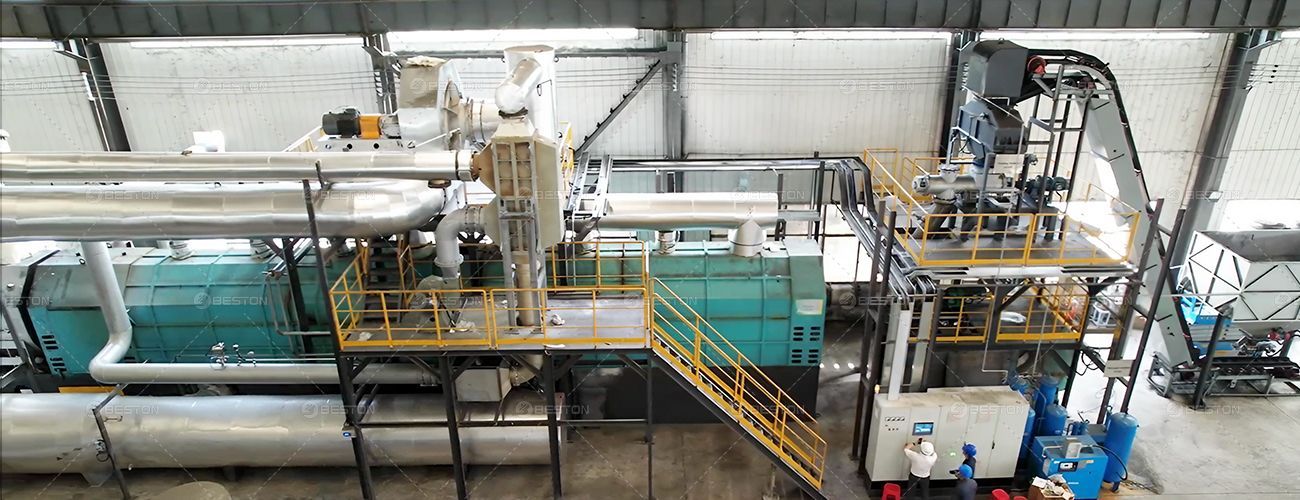Optimal Regions for Oil Sludge Pyrolysis Projects
The management of oil sludge, a by-product of industrial processes such as petroleum refining, has been a growing concern due to its environmental impact. Pyrolysis offers a promising solution by converting oil sludge into valuable products like oil, gas, and carbon. However, selecting the right location for a pyrolysis plant is crucial for ensuring both economic and environmental benefits. Several factors influence the ideal regions for establishing oil sludge pyrolysis projects, ranging from waste generation to infrastructure availability.
Waste Generation and Supply
A key determinant in selecting a location for an oil sludge pyrolysis plant is the consistent supply of feedstock. Oil sludge is produced in large quantities in regions with substantial petroleum industries, including oil extraction, refining, and processing plants. Countries or areas with established oil production or refining activities, such as the Middle East, Russia, and parts of North America, are prime candidates for setting up oil sludge pyrolysis plant.
Regions with an abundance of industrial waste or underutilized oil sludge should also be prioritized. Locations near oil refineries or natural resource extraction zones are advantageous, as they provide a steady feedstock supply for pyrolysis operations. Moreover, oil sludge can be challenging to dispose of, and pyrolysis plants present an efficient solution to this issue, thus meeting local waste management needs.

Availability of Industrial Infrastructure
For an oil sludge thermal desorption unit to operate efficiently, a robust industrial infrastructure is necessary. Regions with advanced industrial capabilities, such as access to energy, water, and reliable transportation routes, offer a competitive advantage. For instance, well-developed industrial zones or energy hubs often provide the essential services required for a pyrolysis plant’s operations.
Moreover, proximity to energy sources is critical for maintaining the plant’s operational cost-effectiveness. Pyrolysis plants consume significant amounts of energy, and being located near power grids or utilizing renewable energy sources can help mitigate operational expenses. Oil-rich regions with an established energy infrastructure, like the Gulf States or Russia, represent ideal locations for such plants.
Access to Technology and Skilled Labor
The implementation of pyrolysis technology requires a skilled workforce and expertise in both waste management and energy systems. Therefore, regions with a strong industrial or technological base are better positioned to support pyrolysis projects. Countries with experience in the energy, petrochemical, or environmental industries are likely to have the workforce capable of managing and maintaining advanced pyrolysis equipment.
For instance, regions like North America and Europe have access to a highly trained workforce, providing a steady pool of labor with the expertise required for efficient plant operations. Additionally, areas with educational institutions focusing on industrial engineering, environmental science, and waste management can provide a continuous supply of skilled workers.
Environmental Regulations and Policy Support
Government regulations play a pivotal role in the success of a pyrolysis project. Regions with clear and favorable policies for waste-to-energy projects, such as those promoting recycling or renewable energy, are ideal for establishing an oil sludge pyrolysis plant. Countries with stringent environmental regulations, like the European Union, encourage the adoption of cleaner technologies to handle hazardous waste like oil sludge.
Policy incentives, such as tax credits, subsidies, or low-interest loans for waste-to-energy projects, can further reduce the financial burden on companies seeking to implement pyrolysis technology. In addition, areas with stricter waste disposal regulations, where oil sludge management is a significant concern, may provide a more favorable environment for the development of pyrolysis plants.
Proximity to Markets for By-products
One of the significant benefits of oil sludge pyrolysis is the production of valuable by-products such as pyrolysis oil, syngas, and carbon black. Therefore, proximity to markets for these products should be considered when selecting a site for a pyrolysis plant. For instance, regions with high energy demand or a thriving chemical industry are prime candidates for selling pyrolysis oil, while carbon black can be used in manufacturing tires, rubber, and plastics.
Regions with established markets for industrial chemicals or renewable fuels should be prioritized. Additionally, if the area is home to industries that require carbon black for production, the pyrolysis plant can create a direct sales channel for this valuable by-product.
Geopolitical Considerations
The geopolitical stability of a region is another crucial factor in determining the success of an oil sludge pyrolysis project. Areas with stable governments and well-established legal frameworks are more conducive to long-term investments. Countries with political uncertainty or weak enforcement of laws related to environmental protection or waste management may pose challenges to the successful establishment and operation of a pyrolysis plant.
